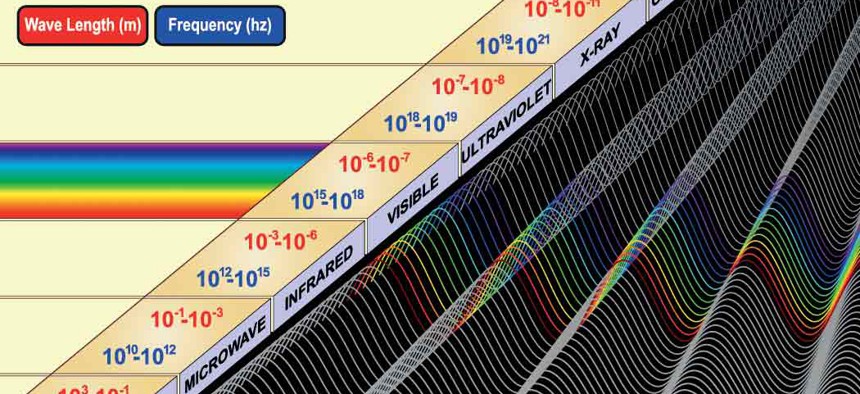Terahertz amplifiers could open new frontiers in RF communications
Researchers from Northrop Grumman, working with DARPA, have developed two different amplifiers capable of using the THz range of the spectrum, which could lead to a new range of high-speed, secure communications.
Pentagon researchers are sponsoring a competition of sorts that could open an area off the electronic spectrum to high-capacity radio communications.
The Defense Advanced Research Projects Agency is already making some progress with its Terahertz Electronics Program, which currently has two contenders, both made by Northrop Grumman: the Solid State Power Amplifier and the Traveling Wave Tube Amplifier.
This isn’t a case of just speed for speed’s sake. The military has been looking to make more efficient use of the spectrum and more devices, mobile and otherwise, are connected and available bandwidth becomes more scarce. The Defense Department also is under mandate to free up 500 MHz worth of its spectrum for commercial use by 2020.
As DARPA points out in an announcement, terahertz, or THz, communications are a new frontier. Currently, typical radios operate in the kilohertz and megahertz frequencies, with electromagnetic oscillations in the thousands or millions of cycles per second. Cell phones and radars operate in the gigahertz range, at billions of cycles per second. The THz range, with trillions of cycles per second, has yet to be conquered.
But Northrop and the research agency are making a dent in it. The Solid State Power Amplifier, or SSPA, showed the ability to operate at terahertz speed in 2014, when it was certified by Guinness World Records as the world’s fastest solid state chip. Made of the semiconductor indium phosphide, it’s also capable of boosting thirtyfold a variety of incoming signals.
The Traveling Wave Tube Amplifier, or TWTA, is a tiny device that uses a vacuum chamber to accommodate the interaction and radio signals and electrons, increasing the range of THz frequencies by a factor of about 200, DARPA said. The technology was recognized the Institute of Electrical and Electronics Engineers this ear at its International Vacuum Electronics Conference.
Although framed as a competition—and “promoted” by DARPA with a poster based on the 1975 “Thrilla in Manilla” boxing match between Muhammed Ali and joe Frazier—both technologies are just taking different paths to the same goal. DARPA project manager Dev Palmer said researchers working on each technology are working as a “tag team to collectively smack down the technical barriers that until now have made many THz applications impossible to realize.”
THz communications hold a lot of promise, she said, including “high-resolution security imaging, collision-avoidance radar, high data rate communications, and remote detection systems for dangerous chemicals and explosives.”





